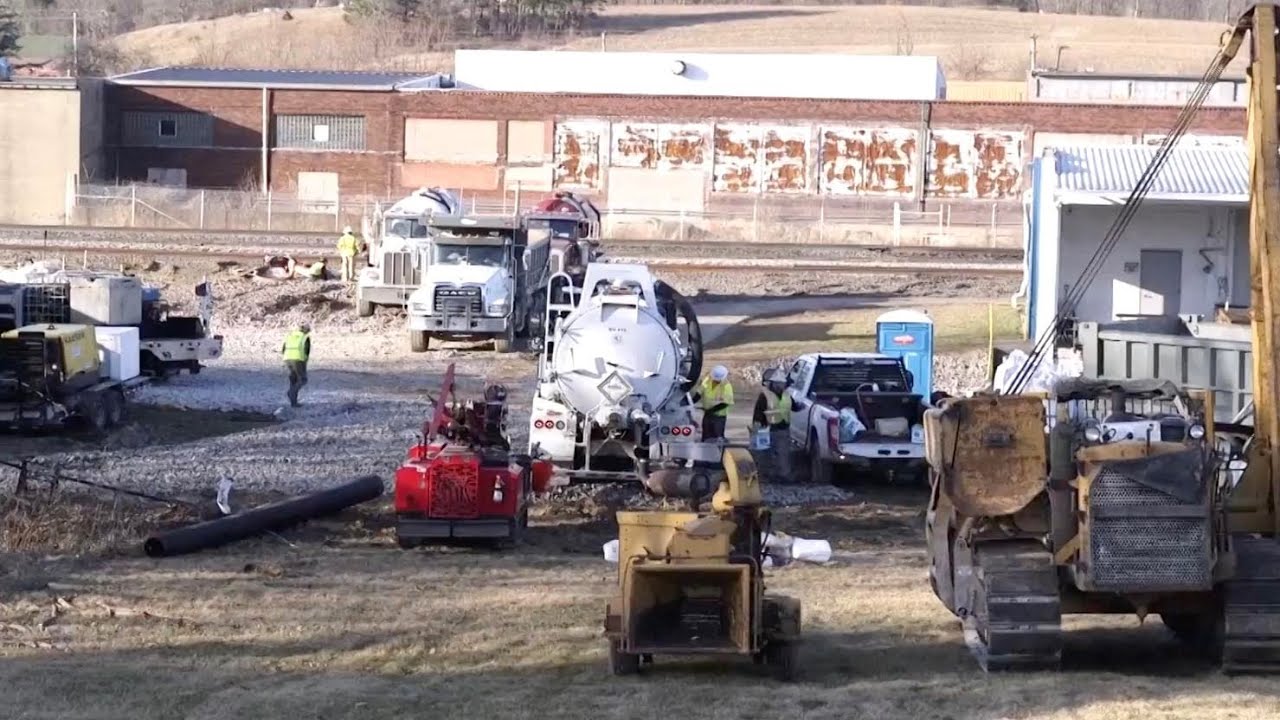Months-Long Lingering Of Toxic Chemicals After Ohio Train Derailment

Table of Contents
The Initial Impact and Immediate Response
On February 3, 2023, a Norfolk Southern train carrying hazardous materials derailed in East Palestine, Ohio. The immediate aftermath involved a controlled release and burning of vinyl chloride, a highly toxic and carcinogenic chemical, along with other dangerous substances such as butyl acrylate and ethylhexyl acrylate. This action, while intended to prevent a potentially larger explosion, released plumes of toxic smoke and raised immediate public health concerns.
- Toxic Chemicals Released: Vinyl chloride, butyl acrylate, ethylhexyl acrylate, and other hazardous materials.
- Immediate Health Concerns: Residents reported symptoms including headaches, nausea, respiratory irritation, and skin rashes.
- Initial Governmental Response: The initial response involved evacuations and air and water monitoring, but criticisms arose regarding the speed and transparency of information dissemination and the adequacy of the cleanup efforts.
Lingering Environmental Contamination
Months after the initial derailment, the pervasive presence of toxic chemicals continues to contaminate the surrounding environment. The extent of the long-term environmental damage is still unfolding. Soil, water, and air samples continue to reveal the presence of these hazardous substances, raising serious concerns about the long-term health and environmental consequences.
- Environmental Testing Findings: Ongoing testing reveals the persistent presence of toxic chemicals in soil and water samples exceeding safety thresholds.
- Long-Term Ecosystem Effects: The potential for lasting damage to local water sources, wildlife populations, and agricultural lands remains a major concern. The disruption of the ecosystem could have ripple effects for years to come.
- Ongoing Monitoring Efforts: While monitoring continues, limitations in testing scope and frequency raise questions about the completeness of the assessment of the long-term impact of the toxic chemicals.
Water Contamination Concerns
The contamination of local water sources poses a particularly grave threat. Both surface water and private wells in the vicinity of the derailment site have tested positive for concerning levels of toxic chemicals.
- Water Testing Results: Reports indicate the presence of vinyl chloride and other contaminants in water samples exceeding safe drinking water limits.
- Impact on Drinking Water Safety and Access: Residents face concerns about the safety and long-term availability of clean drinking water. Many rely on bottled water, creating a significant burden.
- Long-Term Health Risks: Prolonged exposure to contaminated water could lead to a range of serious health problems, including increased cancer risk and other chronic illnesses.
Long-Term Health Effects on the Community
The potential for long-term health problems among residents exposed to the toxic chemicals released during and after the derailment is a paramount concern. While establishing a direct causal link between exposure and specific health issues can be challenging, the potential for serious long-term health consequences is undeniable.
- Reported Health Issues: Residents continue to report a range of symptoms, including respiratory problems, skin irritations, and other health problems.
- Ongoing Health Studies: Long-term epidemiological studies are underway to assess the full extent of the health impacts on the community.
- Challenges in Establishing Causality: Determining the exact link between exposure to specific chemicals and specific health problems will require extensive and long-term research.
Governmental Response and Accountability
The governmental response to the crisis, including investigations and regulatory actions, has faced intense scrutiny. Questions persist about the adequacy of the initial response, the effectiveness of the cleanup efforts, and the overall transparency and accountability of involved parties.
- Adequacy of Cleanup Efforts: The extent to which the cleanup has mitigated the long-term risks associated with the toxic chemicals remains a subject of debate.
- Legal Actions and Potential Lawsuits: Numerous lawsuits have been filed against Norfolk Southern and other responsible parties.
- Government Transparency and Communication: Concerns have been raised regarding the speed and clarity of communication between the government and the affected community.
Conclusion
The months-long lingering of toxic chemicals after the Ohio train derailment presents a significant and ongoing public health crisis. The persistence of contaminants in the environment and the potential for long-term health consequences demand sustained attention, rigorous investigation, and comprehensive remediation efforts. The long-term consequences of toxic chemical exposure extend beyond the immediate aftermath, emphasizing the need for robust environmental monitoring, thorough health studies, and a commitment to holding responsible parties accountable. We must ensure that the lessons learned from this tragedy inform stricter regulations and prevention measures to avoid similar disasters in the future. Stay informed, support affected communities, and demand accountability to prevent the recurrence of this devastating event and address the lingering effects of the months-long lingering of toxic chemicals.

Featured Posts
-
 Hhss Decision To Hire Vaccine Skeptic David Geier Examining The Implications
Apr 27, 2025
Hhss Decision To Hire Vaccine Skeptic David Geier Examining The Implications
Apr 27, 2025 -
 Toxic Chemical Residue From Ohio Train Derailment Found In Buildings For Months
Apr 27, 2025
Toxic Chemical Residue From Ohio Train Derailment Found In Buildings For Months
Apr 27, 2025 -
 Teslas Canadian Inventory Strategy A Response To Tariff Concerns
Apr 27, 2025
Teslas Canadian Inventory Strategy A Response To Tariff Concerns
Apr 27, 2025 -
 Hair And Tattoo Transformation Ariana Grandes Professional Style Upgrade
Apr 27, 2025
Hair And Tattoo Transformation Ariana Grandes Professional Style Upgrade
Apr 27, 2025 -
 Immunization Autism Link Federal Study Under Fire After Vaccine Skeptic Appointment
Apr 27, 2025
Immunization Autism Link Federal Study Under Fire After Vaccine Skeptic Appointment
Apr 27, 2025
